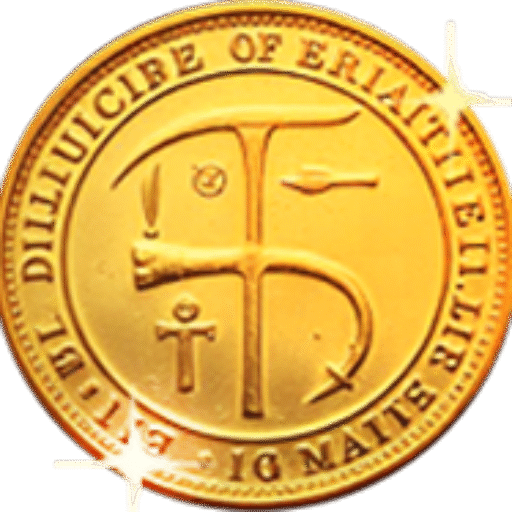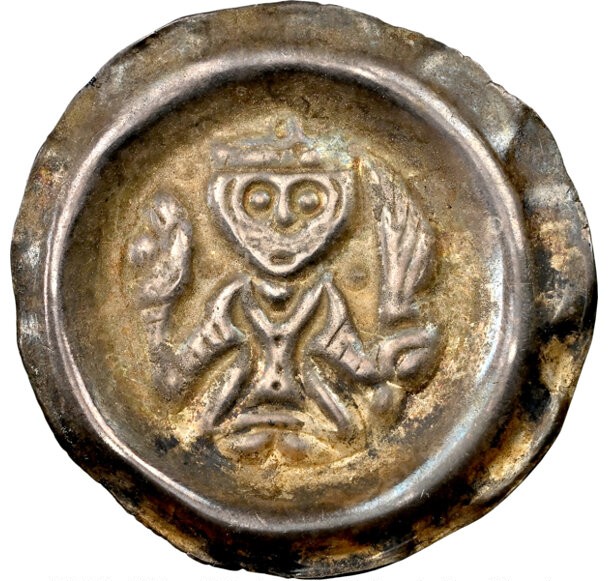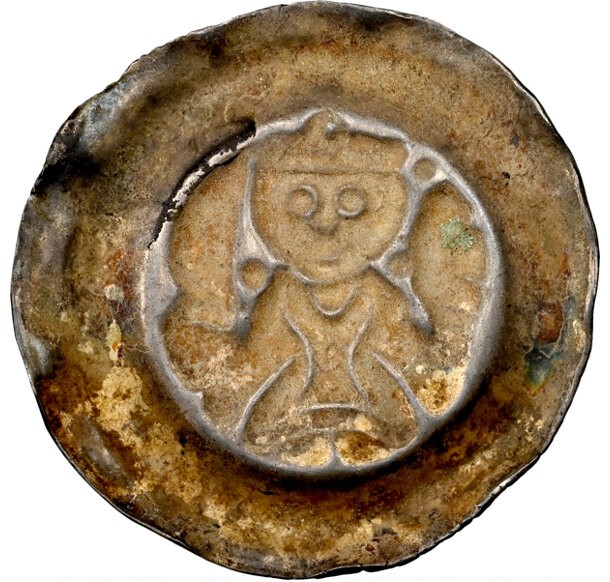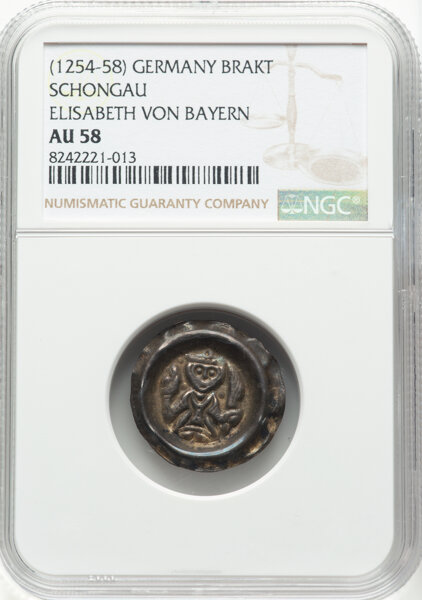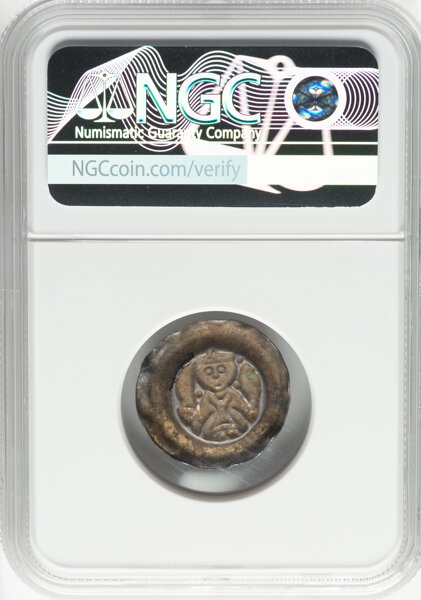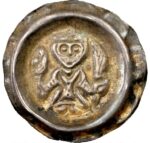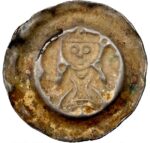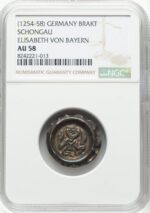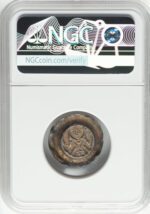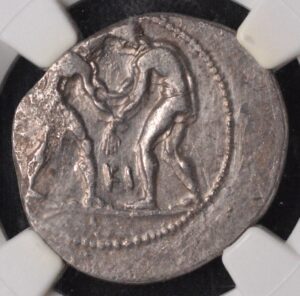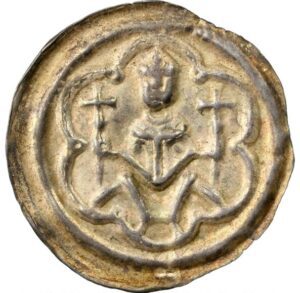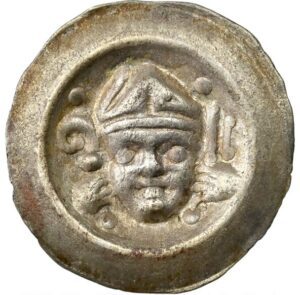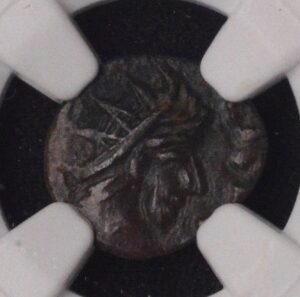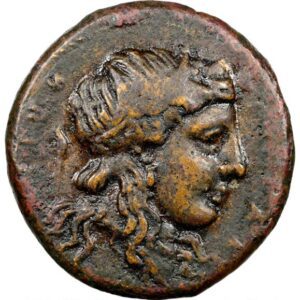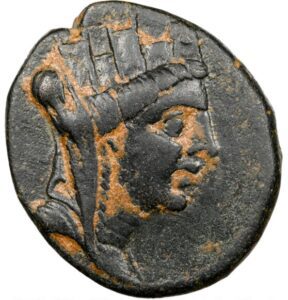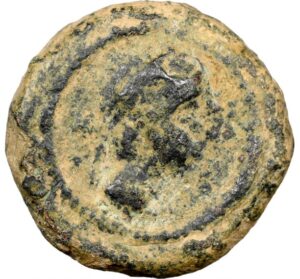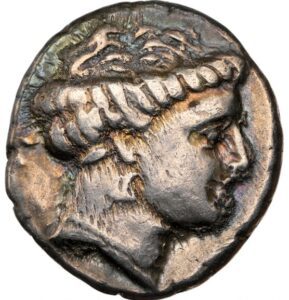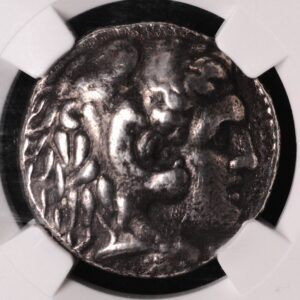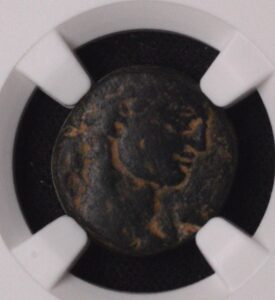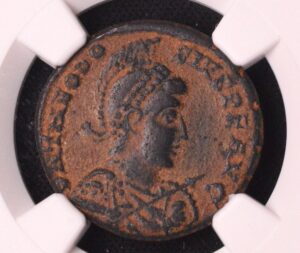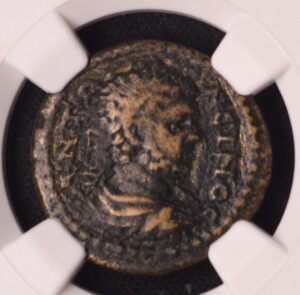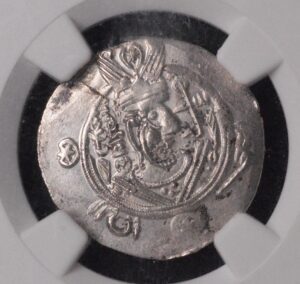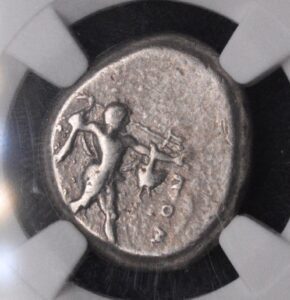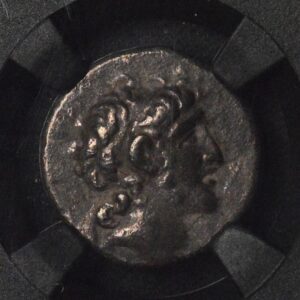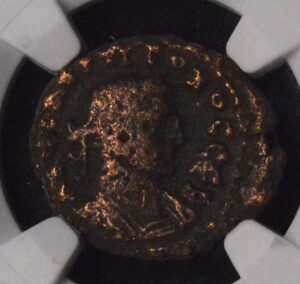Description
The Schongau bracteate struck under Elisabeth von Bayern between 1254 and 1258 is a silver medieval coin minted in Bavaria during her regency. This bracteate type was produced using a single die and struck on an extremely thin silver flan, leaving the reverse blank while pushing the obverse design into relief. The coin is small, usually about 21 to 22 millimeters in diameter and weighing under a gram, typical of mid-13th-century Bavarian minting practices.
Its design features Elisabeth in half-length portrait style, wearing a crown and holding a branch or scepter, representing both her ducal authority and pious stature. This imagery aligns with other Bavarian and Swabian episcopal coinages of the same era, which merged ecclesiastical dignity with secular rulership. The bracteate’s artistry is notable for the fine engraving and expressive medieval portraiture produced under primitive striking technology.
Elisabeth ruled after the death of her husband, Duke Otto II of Bavaria, and exercised minting authority in the transitional period when local duchesses rarely controlled coinage directly. Coins from her brief reign are significant historical artifacts, reflecting the economic independence and local governance of the Bavarian duchies in the 13th century.
An NGC AU58 example would reflect excellent preservation for such a fragile bracteate, showing crisp detail and minimal edge weakness. Examples with full portrait clarity and original toning are particularly valued for their authenticity and rarity within the spectrum of German medieval feudal coinage.
The Schongau bracteate struck under Elisabeth von Bayern between 1254 and 1258 is a silver medieval coin minted in Bavaria during her regency. This bracteate type was produced using a single die and struck on an extremely thin silver flan, leaving the reverse blank while pushing the obverse design into relief. The coin is small, usually about 21 to 22 millimeters in diameter and weighing under a gram, typical of mid-13th-century Bavarian minting practices.
Its design features Elisabeth in half-length portrait style, wearing a crown and holding a branch or scepter, representing both her ducal authority and pious stature. This imagery aligns with other Bavarian and Swabian episcopal coinages of the same era, which merged ecclesiastical dignity with secular rulership. The bracteate’s artistry is notable for the fine engraving and expressive medieval portraiture produced under primitive striking technology.
Elisabeth ruled after the death of her husband, Duke Otto II of Bavaria, and exercised minting authority in the transitional period when local duchesses rarely controlled coinage directly. Coins from her brief reign are significant historical artifacts, reflecting the economic independence and local governance of the Bavarian duchies in the 13th century.
An NGC AU58 example would reflect excellent preservation for such a fragile bracteate, showing crisp detail and minimal edge weakness. Examples with full portrait clarity and original toning are particularly valued for their authenticity and rarity within the spectrum of German medieval feudal coinage.
The Schongau bracteate struck under Elisabeth von Bayern between 1254 and 1258 is a silver medieval coin minted in Bavaria during her regency. This bracteate type was produced using a single die and struck on an extremely thin silver flan, leaving the reverse blank while pushing the obverse design into relief. The coin is small, usually about 21 to 22 millimeters in diameter and weighing under a gram, typical of mid-13th-century Bavarian minting practices.
Its design features Elisabeth in half-length portrait style, wearing a crown and holding a branch or scepter, representing both her ducal authority and pious stature. This imagery aligns with other Bavarian and Swabian episcopal coinages of the same era, which merged ecclesiastical dignity with secular rulership. The bracteate’s artistry is notable for the fine engraving and expressive medieval portraiture produced under primitive striking technology.
Elisabeth ruled after the death of her husband, Duke Otto II of Bavaria, and exercised minting authority in the transitional period when local duchesses rarely controlled coinage directly. Coins from her brief reign are significant historical artifacts, reflecting the economic independence and local governance of the Bavarian duchies in the 13th century.
An NGC AU58 example would reflect excellent preservation for such a fragile bracteate, showing crisp detail and minimal edge weakness. Examples with full portrait clarity and original toning are particularly valued for their authenticity and rarity within the spectrum of German medieval feudal coinage.
CUSTOMER FEEDBACK








Related Products & Newly Released!
-
$400.00




SHIPPING POLICY
Your order is shipped from the United States with USPS tracking within one business day.
14 Day Return Policy
You can return your item back within
14 days of the purchase

Secure payments
Your payments are 100% secure and are processed through Square or PayPal on a protected security network.
SHIPPING POLICY
FREE International and Domestic (United States) shipping. Your order is shipped with USPS tracking 24 hours after you order.
14 Day Return Policy
You can return your item back within
14 days of the purchase

Secure payments
Your payments are 100% secure and are processed through Square or PayPal on a protected security network.
RESOURCES
support
Get Fresh Articles!
Sign up now to receive our articles for the latest insights and promotions!
RESOURCES
support
Get Fresh Articles!
Signup our newsletter to get update insight or promotions.

